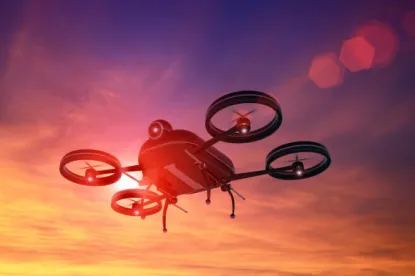Welcome to the Drone Age.
The Federal Aviation Administration’s (“FAA”) long-awaited rule on the commercial use of small unmanned aircraft systems (“UAS” or “drones”) took effect Monday, August 29, 2016, providing a comprehensive and generally applicable set of rules for anyone wishing to operate a small drone for commercial purposes.
This does not mean you can immediately use a drone for commercial purposes. Under the new rule, you must have a Remote Pilot Certificate to operate a drone. Applicants must be at least 16 years old and proficient in English, pass an Initial Aeronautical Knowledge Test at an FAA-approved test center, and pass a TSA background check. The FAA estimates the application process will take six to eight weeks to complete. The agency has posted prep materials for the knowledge test on its website, along with information on the approved test centers.
All drones used for commercial purposes also must be registered with the FAA before they can be flown. Drones can be registered online here.
Other conditions set out under the rules state that drones:
- Must be flown in uncontrolled (Class G) airspace (generally low altitude airspace not near an airport)
- Must be kept in sight of the pilot or another observer (called “visual line-of-sight”)
- Must fly under 400 feet
- Must fly at or below 100 mph
- Must fly during the day (no night operations permitted)
- Must yield right of way to manned aircraft
- Must not fly over people (except for people participating in the drone operation)
- Must not fly from a moving vehicle (except over a sparsely populated area)
The new rule establishes a procedure for seeking waivers of most of the requirements listed above if the applicant demonstrates that the operation can still be safely executed. The FAA has set up an online portal where waivers can be requested. Also, for flights that are in any airspace other than Class G, authorization must be obtained from air traffic control, using this online form. It is not clear how long it will take for waiver and authorization requests to be reviewed and acted on, but it has advised applying at least 90 days before the anticipated use.
Already, the FAA reportedly granted 76 waivers on August 29, 2016, for operators to fly beyond the conditions outlined above. The FAA said 72 of those waivers were for operators who wanted to fly drones at night and have taken appropriate safety precautions. CNN was also granted a waiver to operate a small, tethered drone over people after mitigating safety concerns.
In a press conference on August 29, the FAA said it was working on a new rule addressing drone flights over people, and expected the rule to be done by the end of this year. It also said it was working on a rule allowing flights beyond the line of sight, but did not say when that rule would be ready.
For operators that obtained Section 333 exemptions to use drones, those exemptions are still in effect and are good through their individual expiration dates. Operators can choose whether they wish to continue operating under their Section 333 exemption (and all the rules contained therein) or want to operate under the new rule.
In spite of the restrictions, the rule represents a major step forward for the commercial use of drones in the United States. We expect that the rule, which applies to drones weighing less than 55 pounds, will spur widespread use of drones for a variety of commercial operations, including aerial video for newsgathering, pipeline and radio tower inspections, aerial surveying, aerial photography for real estate and construction site monitoring, disaster response, and other uses still to be developed.



 />i
/>i
